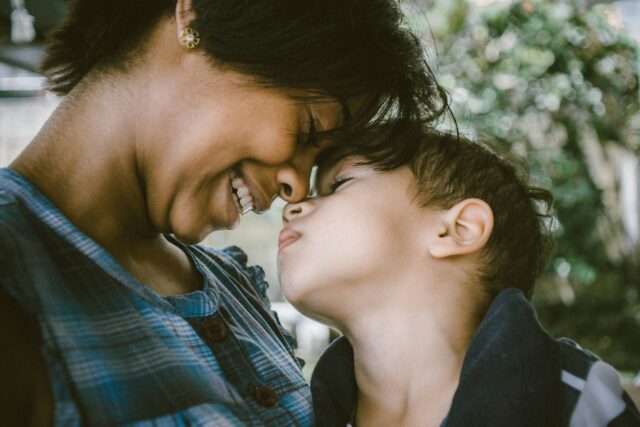Got Scaredy Cat Kids?
By: Natalie Rice-Thorp, Ph.D. | January 24, 2020

When our kids feel anxious or scared, any parent would want to jump in and save them from emotional discomfort. In our busy lives, we tend to jump in too soon or brush concerns aside with a quick “there’s nothing to worry about.” Whether you tend to jump in as a swooper or dismiss as a brusher, consider the following five tips first.
5 Tips For Helping Your Anxious Child
1. I Get It
Show your kids that you “get it” when they feel scared, anxious, or worried. Even if you do not feel worried about the situation, you can still show that you understand why they feel worried: “It seems like you feel worried about going to the birthday party.” Listen to what they have to say about what exactly worries them. It might not be what you think.
2. Baby Steps
Be careful letting them off the hook too easily. It’s tempting and quicker to give in and let children escape or avoid the situation but better to help them conquer their fears. You can act with confidence and help your child to take brave steps.
For example, if the ocean scares your child, you could start by reading a book about the ocean, by looking at pictures of it, by listening to ocean sounds or watching an ocean video together. When they have mastered these activities, you could then have a picnic with the ocean in view or play on a nearby playground. Help them make neutral or positive associations with the ocean. Eventually, you can move on to holding them while they dip their toes into the water. Act as calm as a cucumber when you do this because your child will look to you to show them how to feel less scared and more secure in new situations.
3. Brave Stories
Remind kids of times when they felt worried in the past but they acted bravely and the activity turned out okay. Share a story of your own youth when you felt worried. For younger kids, you can use stuffed animals to role play situations and have the child help the animal behave bravely. Add a superhero cape to the animal if you feel super inspired yourself!
4. Blow Bubbles
Teach the child to blow bubbles then pretend to blow bubbles together. Long exhales signal a calm state to our bodies. Encourage the child to “blow pretend bubbles” when they are feeling stressed. Bonus challenge: For those who are not squeamish, blow pretend bubbles out their nose.
5. Rock a Stuffie to Sleep
Teach the child to rock a stuffed animal to sleep. This breathing exercise encourages long exhales. With your child, lie down on your backs each with a stuffed animal on your stomachs. Demonstrate how to breathe with long breaths out to rock the animal to sleep. This helps when kids feel anxious or angry. A tip from the pros: Teach this for the first time when the child already feels calm. This minimizes collateral damage to the stuffie and increases the chances of success for the child. ☺
As you know, every child is different and not all techniques work for every child. A mental health professional can help you find the most effective strategies for your child.
Image: Donnie Ray Jones on flickr and reproduced under Creative Commons 2.0



